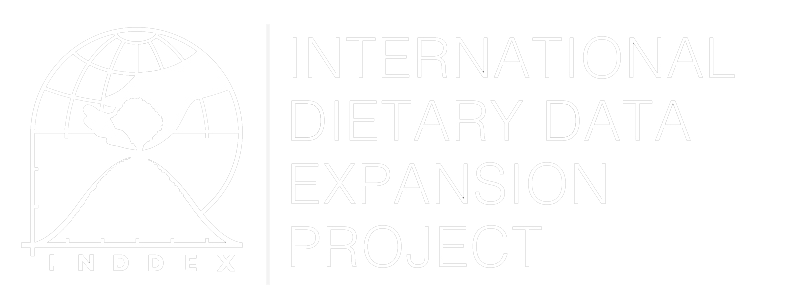Food Insecurity Experience Scale (FIES)
Overview
The Food Insecurity Experience Scale (FIES) is one of the four experience-based food insecurity scales included in the Data4Diets platform, which also contains the Household Hunger Scale (HHS), the Household Food Insecurity Access Scale (HFIAS), and the Latin American and Caribbean Food Security Scale (ELCSA). The FIES was developed by the Food and Agriculture Organization (FAO) through the Voices of the Hungry (VoH) project, building on the pioneering work to develop the USDA Household Food Insecurity Survey Module, HFIAS, and the ELCSA. The FIES was derived from the adult-referenced questions of the ELCSA to create a shortened, standardized experience-based measure for use across sociocultural contexts (Ballard et al., 2013).
In 2014, FAO began collecting FIES data by leveraging the Gallup World Poll (GWP), which surveys nationally representative samples of the adult population annually in nearly 150 countries. With these data in hand, Voices of the Hungry (VoH) developed the analytical protocols necessary to take experience-based food security measurement global, making it possible to compare prevalence rates across countries and even sub-national populations (Cafiero et al., 2016).
Method of Construction
The FIES module can be administered with either a one month or 12 month recall period, depending on the research or programmatic priorities. It consists of eight questions capturing a range of food insecurity severity, with yes/no responses. While developed primarily to measure the individual experience of food insecurity, the scale can also be modified for use at the household level, in which case the questionnaire can be administered to an individual who responds on behalf of the household. The FIES survey modules (individual and household versions) and translations can be found on the VoH website. The creation of the scale requires a statistical module programmed in R, which can also be found on the VoH website, along with supplemental explanatory materials.
Based on output from the model, two indicators are produced: the prevalence of severe food insecurity, and the prevalence of moderate or severe food insecurity (i.e., the prevalence of moderate and severe combined).
Uses
The FIES is one of two indicators used for measuring progress toward achieving Goal 2.1 of the Sustainable Development Goals (SDGs), which relates to ending hunger and ensuring food access (SDGs, 2016). This indicator is currently used by FAO and a growing number of countries to monitor national and global food security trends.
The FIES can be used to measure food security for the following purposes:
- To assess the population prevalence of food insecurity (for both SDG monitoring and national use)
- To identify vulnerable populations
- To guide and monitor the effects of food security policies and programs
- To identify risk factors and consequences of food insecurity
The FIES does not quantify food consumption nor does it assess diet quality; doing so requires other methods and indicators such as a quantitative 24-hour dietary recall to quantify food consumption to calculate the Mean Adequacy Ratio (MAR) or a diet diversity index to determine the Minimum Dietary Diversity Score for Women (MDD-W) in order to gain a picture of the "adequacy" aspect of diet quality.
Strengths and Weaknesses
The main strength of the FIES is that it produces population-level estimates of food insecurity that are comparable across countries, cultures, and sub-populations. The FIES analytical methodology can be applied to data collected using the HFIAS and the ELCSA survey modules to produce comparable results. Additionally, when the individual-referenced survey module is used, the FIES offers the advantage of allowing for disaggregation of data by gender (Brunelli & Viviani, 2014).
The FIES analytical methodology involves a sophisticated probabilistic approach to classify households according to their food security status. Though the results are statistically robust and comparable across countries and sub-populations, it may be challenging for non-specialists to conduct the analysis and produce the estimates. However, this analytic approach makes it possible to account for differences in experiences of food insecurity across specific cultural or personal perceptions. FAO provides tools, including software and learning materials, to support users, as well as technical assistance.
Data Sources
The data required to calculate this indicator are collected using the eight-item FIES survey module (individual or household version), which can be easily integrated into a broader survey of individuals (e.g. a health and nutrition survey) or households (e.g. Household Consumption and Expenditure Survey [HCES]). The FIES survey modules, and translations of the individual version of the survey into 170 languages and dialects, can be found on the VoH webpage. Also included on the webpage is the FIES Statistical Software Package for conducting data analysis and producing estimates of the prevalence of food insecurity.
Links to Guidelines
Links to Validation Studies
- Cafiero et al. (2018). Food Security Measurement in a Global Context: The Food Insecurity Experience Scale. Food and Agricultural Organization.
- Wambogo et al. (2018). Validity of the food insecurity experience scale for use in sub-Saharan Africa and characteristics of food-insecure individuals. Current developments in nutrition.
